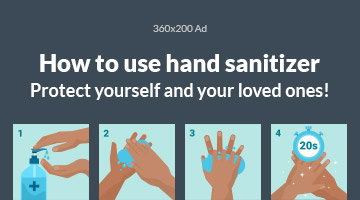Climate convergence is not just regular climate change. It is when many different climate problems happen at the same time.
What Is Climate Convergence?
These events are fast, powerful, and connected. Once one system fails, it can cause others to fall like dominoes. Think of it like a forest fire: it starts small but can spread and destroy everything within hours.
This is not something that will happen slowly over 50 years. It is already starting now. Experts believe it could reshape how 8 billion people live in just 5 years.
One big part of climate convergence is the Atlantic Ocean current, known as AMOC. This current helps keep weather stable across the world. It moves warm and cold water between the tropics and the poles. But fresh water from melting ice in Greenland is stopping it from working properly. This could cause Europe to freeze suddenly while other parts of the world overheat.
Another problem is that climate change is damaging our global supply chains. These chains bring food, medicine, and goods to stores around the world. When floods, heatwaves, or storms hit farms, factories, and ports, these chains break. People then can’t get what they need.
The Major Triggers of Collapse
There are six major systems collapsing at once:
First, the Atlantic Ocean current may shut down. This would make Europe much colder. Cities like London could freeze in winter, and farming would stop in many areas.
Second, our global supply system is failing. Many products need to travel across countries to reach us. But now, droughts and floods are stopping factories, roads, and ports. For example, making computer chips needs water, but droughts are stopping that. Food processing plants are also shutting down due to storms and blackouts.
Third, global food systems are falling apart. More than 300 million people already face food crises. Floods, droughts, and heat are destroying farms in India, the U.S., and Australia. Fish stocks are also shrinking as oceans warm and become more acidic.
Fourth, extreme weather is now much worse than before. We see record-breaking heatwaves, stronger storms, and unexpected snowfalls. These destroy homes, power lines, roads, and schools. Many people also die from heat or cold. Insurance companies are going bankrupt because they can’t pay for the damage.
Fifth, the oceans are breaking down. They help cool the planet and provide food. But now, they are too warm, polluted, and acidic. Coral reefs are dying, fish are disappearing, and storms are growing stronger.
Sixth, the ice sheets in Greenland and Antarctica are melting fast. This is causing sea levels to rise. Cities like New York, Mumbai, and Jakarta may flood. Deltas that grow food will drown. Over 1 billion people living on coasts are at risk.
What Happens When These Systems Fail?
Once these systems reach tipping points, the effects come fast. In Europe, once AMOC collapses, winters will turn deadly cold. Farming will stop, and 50–100 million people could try to flee south.
Around the world, supply chains will collapse. Medicine, food, and electronics will disappear from shelves. Prices will jump by 200–400%. Some countries may see their money become worthless.
Food production will crash. Multiple farming zones will fail at the same time. Bread, rice, and vegetables will become rare. People will fight over food. Governments may bring in food rationing. Malnutrition could affect up to a billion people.
Extreme weather will break buildings, roads, and the power grid. Schools and hospitals won’t work properly. Heat and cold will kill hundreds of thousands each year.
Oceans will no longer protect us. Fish will vanish. Coastal cities will flood more often. And small island countries may completely disappear.
Ice sheets will melt faster, adding feet to sea levels. Ports, airports, and farmlands will vanish underwater. Insurance companies will fail. People will be forced to move inland in huge numbers.
How to Prepare for the Climate Convergence
Climate convergence is not something we can fully stop now. But we can prepare.
Start with food security. Store at least 6 months of food that doesn’t spoil. Grow vegetables at home if you can. Learn to dry, can, or ferment food.
Make sure you have clean water. Use rainwater collection, water filters, or dig a well. Keep purification tablets ready.
Build energy backup systems. Install solar panels or have backup heaters. Make sure you can live without the grid for days or weeks.
Stock up on essential supplies. This includes tools, batteries, medicines, first aid, and hygiene items.
Wheat Yields to Crash 45%, GDP to Shrink—Asia’s Alarming Climate Forecast Unveiled
Join or form community groups. Share tools, teach each other, and help neighbors. Strong local communities are more likely to survive.
Look into moving to safer areas. High-elevation, inland places with water access will be better. Avoid coasts, deserts, and flood zones.
Lastly, build up your skills. Learn how to fix things, grow food, cook without electricity, and take care of basic medical needs.
Climate convergence is not a future worry—it is happening now. It combines freezing, flooding, fires, famine, and collapse into a single, fast-moving storm. We must prepare while we still can. Food, water, energy, and strong communities will make the biggest difference.


